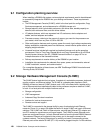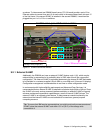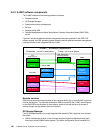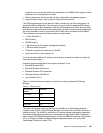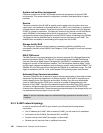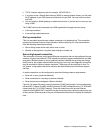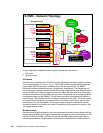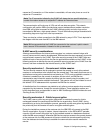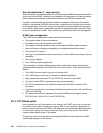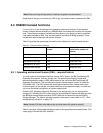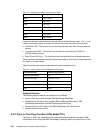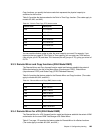Chapter 9. Configuration planning 163
TCP/IP interface network mask (for example, 255.255.254.0).
If you plan to use a Domain Name Server (DNS) to resolve network names, you will need
the IP address of your DNS server and the name of your DNS. You may have more than
one DNS.
You can specify a default gateway in dotted decimal form or just the name in case you are
using a DNS.
The S-HMC can also be connected to the IBM organization’s support services using:
A dial-up connection
A secure high-speed connection
Dial-up connection
This is a low-speed asynchronous modem connection to a telephone line. This connection
typically favors small amounts of data transfers. When configuring for a dial-up connection,
have the following information available:
Which dialing mode will be used, either tone or pulse.
Whether a dialing prefix is required when dialing an outside line.
Secure high-speed connection
This connection is through a high-speed Ethernet connection that can be configured through
a secure virtual private network (VPN) internet connection to ensure authentication and data
encryption. IBM has chosen to use a graphical interface (WebSM) for servicing the storage
facility, and for the problem determination activity logs, error logs, and diagnostic dumps that
may be required for effective problem resolution. These logs can be significant in size. For
this reason, a high-speed connection would be the ideal infrastructure for effective support
services.
A remote connection can be configured to meet the following customer requirements:
Allow call on error (machine-detected)
Allow connection for a few days (customer-initiated)
Allow remote error investigation (Service-initiated)
Figure 9-3 on page 164 shows a typical redundant S-HMC configuration. In this configuration,
we have MC1 (internal S-HMC) and MC2 (external S-HMC) connected to the 172.16-BLACK
network and the 172.16-GRAY network. These two networks are the private Ethernet
networks of the DS8000. MC1 and MC2 are also connected to the customer’s network by way
of the customer Ethernet ports on the pair of Ethernet switches that are installed at installation
time.






